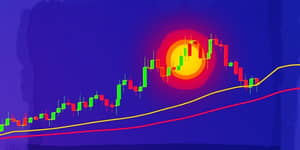
Embarking on a trading journey can feel overwhelming, but understanding moving average crossovers brings clarity and confidence. This guide unpacks the strategies, tools, and mindset you need to harness these powerful indicators.
A moving average smooths price data over a set period to reveal market trends. By reducing noise, it helps traders focus on the underlying direction rather than every minor fluctuation.
There are two primary types of moving averages. The simple moving average (SMA) calculates an equally weighted average of past prices over a specified interval. In contrast, the exponential moving average (EMA) assigns more weight to recent prices, making it responsive to recent price action.
Choosing between SMA and EMA depends on your trading goals. EMAs react faster to new information, while SMAs offer a smoother, less volatile view of long-term trends.
Moving average crossovers are among the most accessible trading strategies. When a short-term average crosses a longer-term average, it generates a clear signal: buy when it crosses upward, sell when it crosses downward.
These signals build on basic human psychology—identifying shifts in momentum before they become obvious to the broader market. While simple, crossovers tap into powerful market dynamics: the collective movement of buyers and sellers.
The classic Golden Cross occurs when a short-term moving average crosses above a long-term moving average. For many traders, the 50-day SMA crossing above the 200-day SMA is the hallmark of a sustained bullish trend. Conversely, the Death Cross—when the 50-day SMA falls below the 200-day SMA—signals potential market weakness.
These signals are easy to spot and can be automated. Yet they remain potent because they reflect broad shifts in market sentiment. When retail and institutional traders recognize the crossover, momentum often accelerates.
The double moving average strategy uses two different moving averages to fine-tune entry and exit points. A common setup is a 20-day EMA and a 50-day EMA. When the 20-day EMA crosses above the 50-day EMA, it triggers a buy signal; when it crosses below, it triggers a sell.
This approach suits trending markets by capturing momentum while limiting noise. By adjusting the periods, traders can adapt the strategy to various timeframes—from daily to intraday charts.
For those seeking stronger confirmation, the triple moving average crossover adds a third layer of analysis. Popular combinations include 9-day, 21-day, and 55-day EMAs for medium-term trends, or 5-day, 8-day, and 13-day EMAs for scalping.
When the shortest EMA crosses above both longer EMAs, it indicates a robust bullish signal. Conversely, a cross below both signals a strong bearish move. This strategy reduces false signals by requiring agreement across multiple timeframes.
Timeframe selection critically affects crossover performance. Shorter timeframes generate more signals but carry higher risk of whipsaws. Longer timeframes provide more reliable trend signals with fewer false alarms but may delay entries.
Because moving average crossovers are lagging indicators, they can miss the early stages of a trend. Combining them with leading indicators—such as RSI or MACD—can enhance signal validation. Use divergence analysis or volume confirmation to further refine your entries and exits.
Moving average crossovers offer several clear benefits, but traders must also remain aware of their limitations. Below is a concise comparison of strengths and drawbacks:
Successfully trading moving average crossovers requires more than just watching lines cross. Here are practical tips to boost your performance:
Moving average crossovers distill complex market data into straightforward, actionable signals. By mastering simple, double, and triple crossover strategies, you can adapt to various timeframes and market environments.
Remember, no single indicator guarantees success. Combining moving averages with other tools, practicing disciplined risk management, and continuously refining your approach will help you harness the true power of these strategies. Start small, learn from each trade, and gradually build confidence as you integrate moving average crossovers into your trading arsenal.
References













